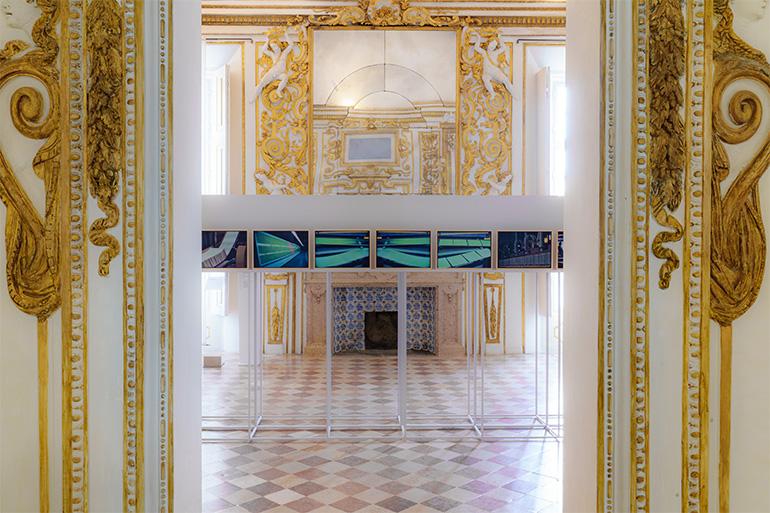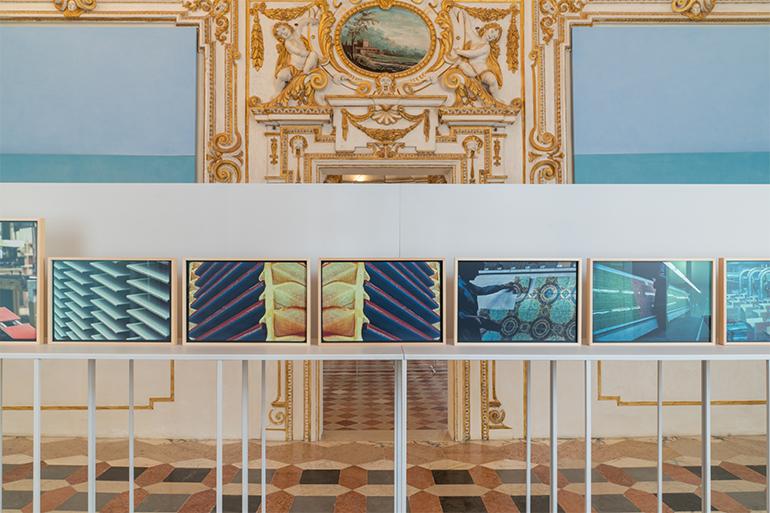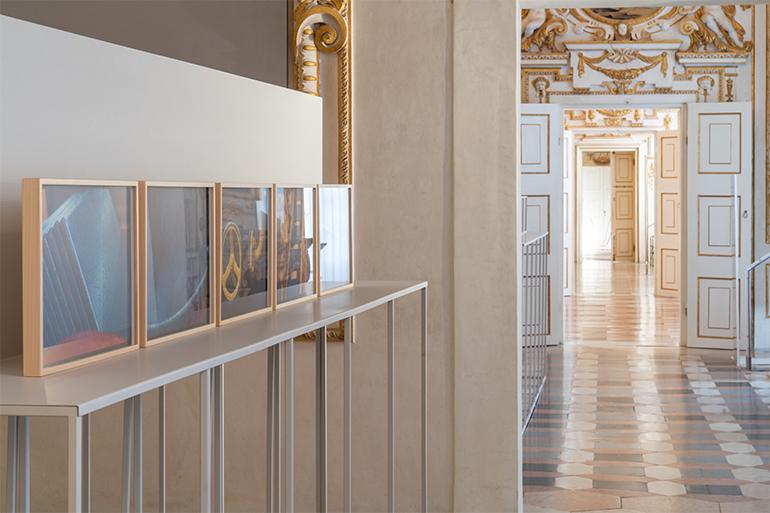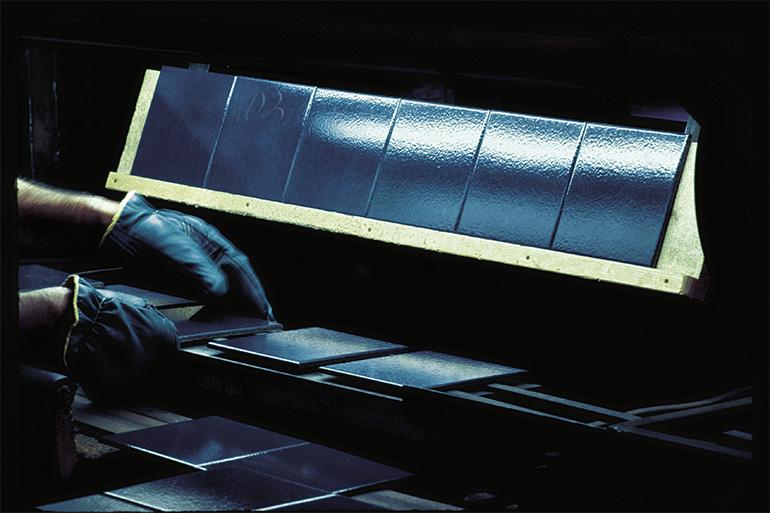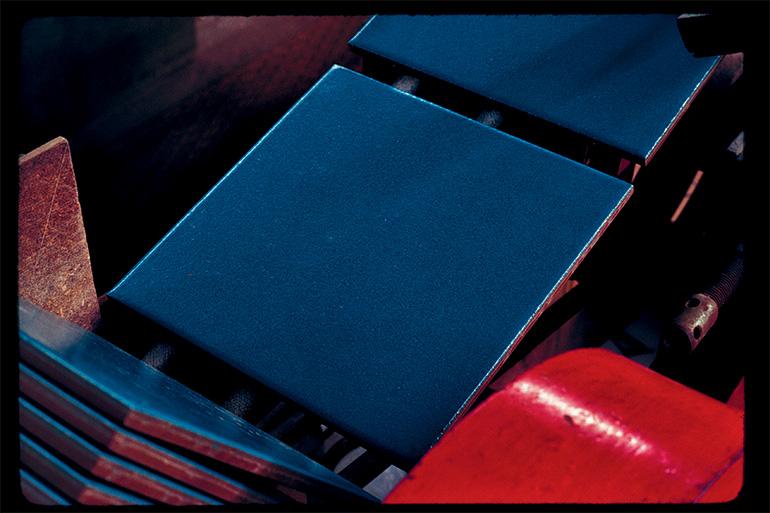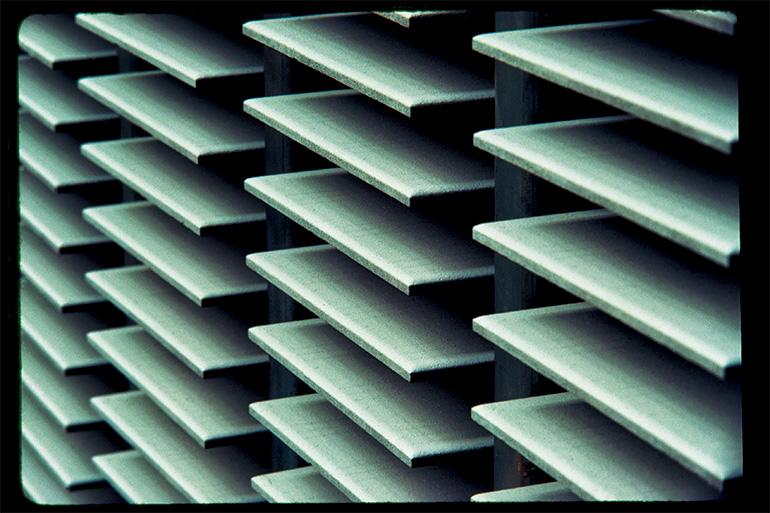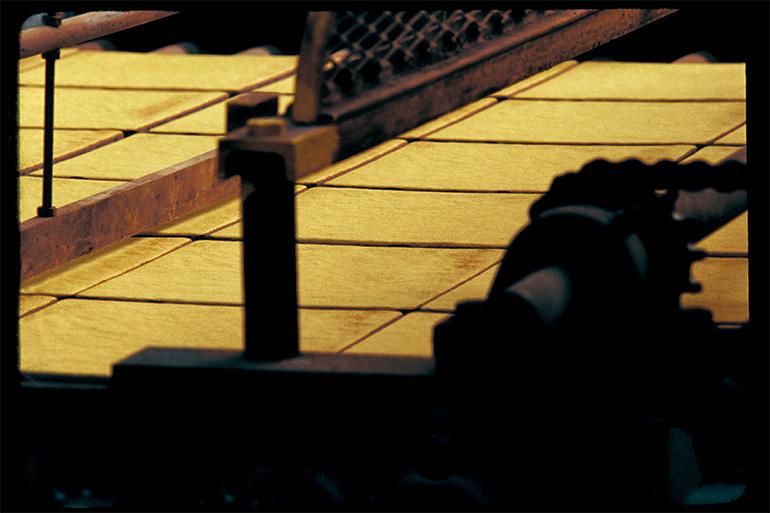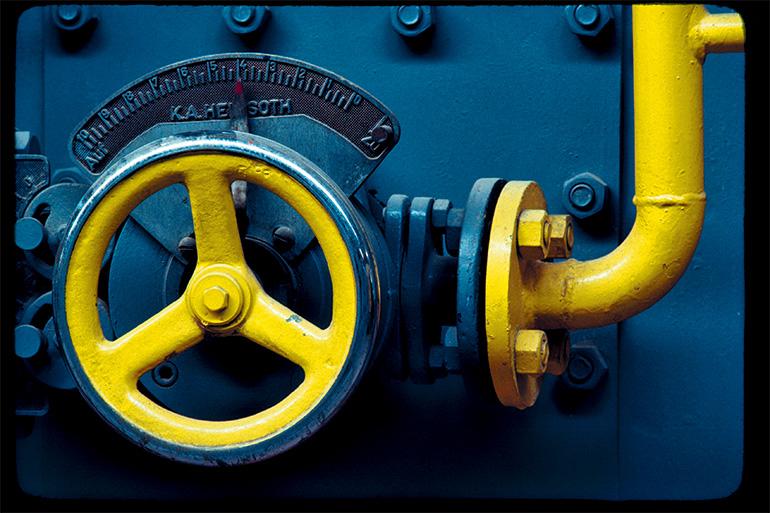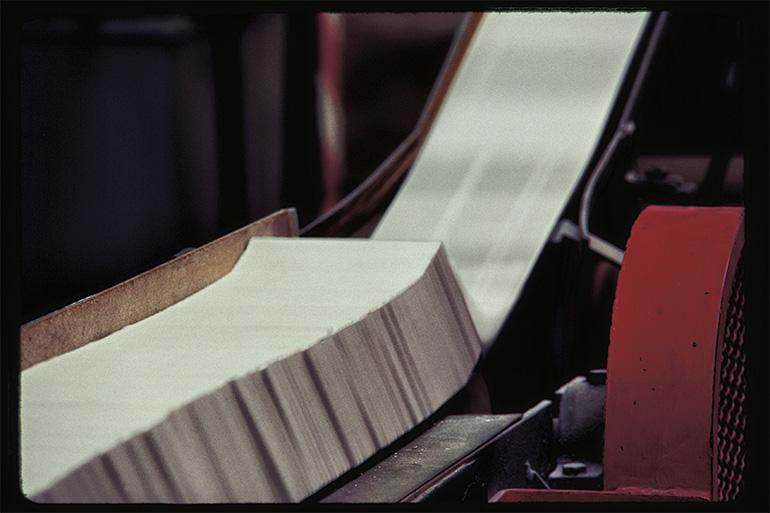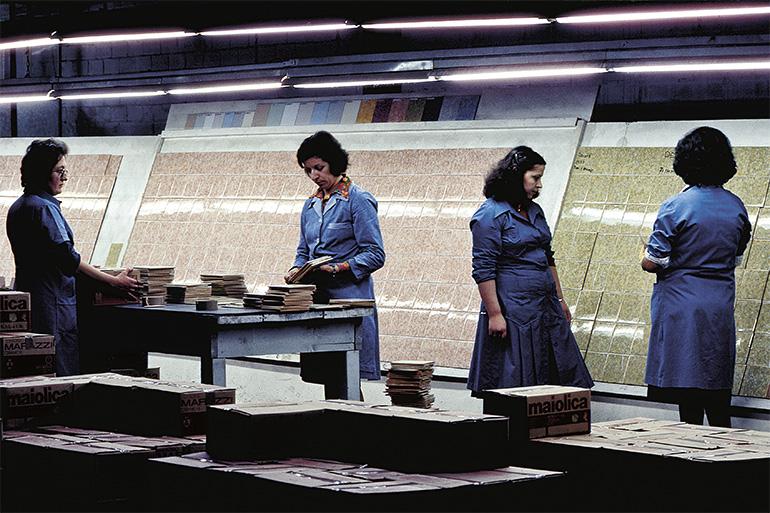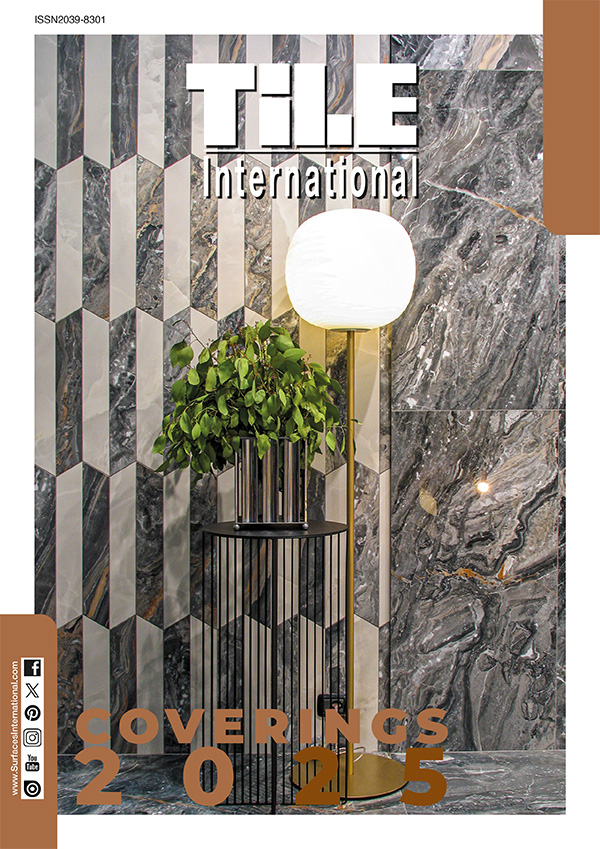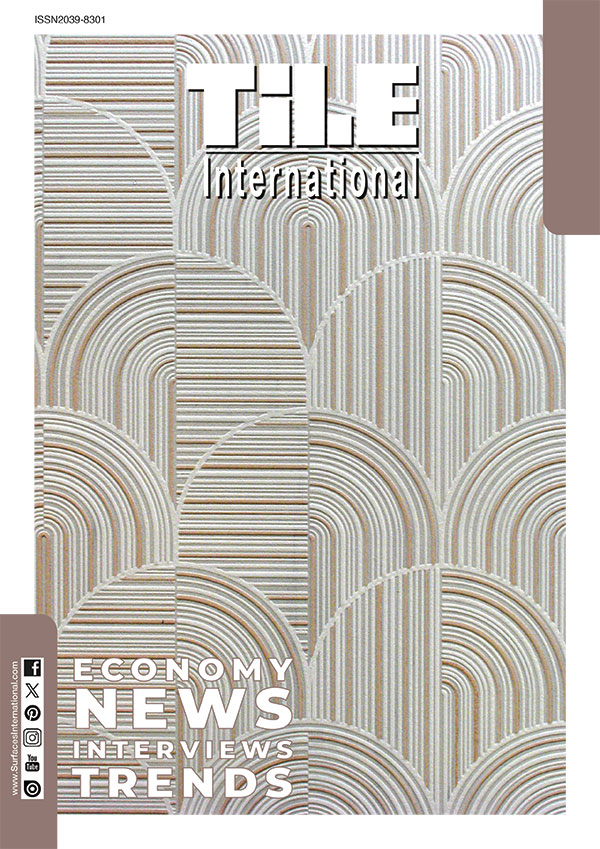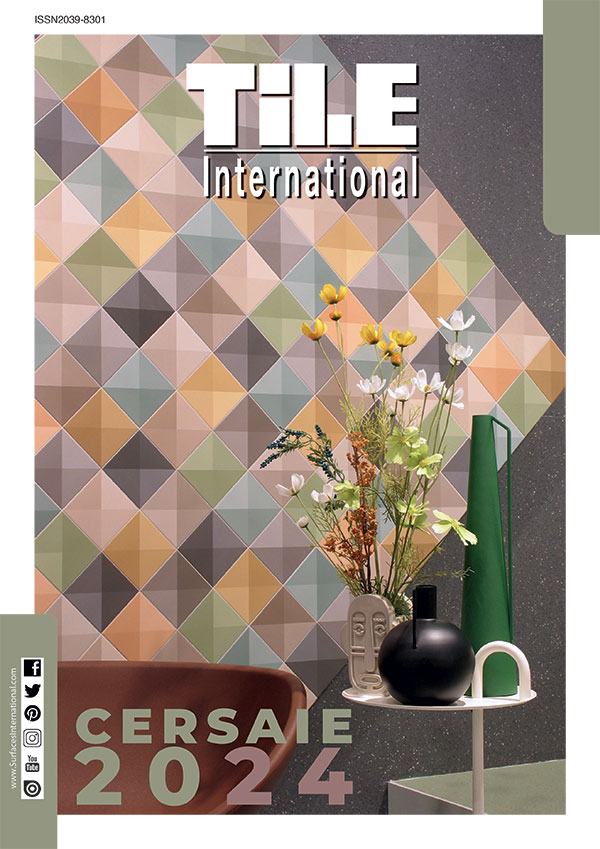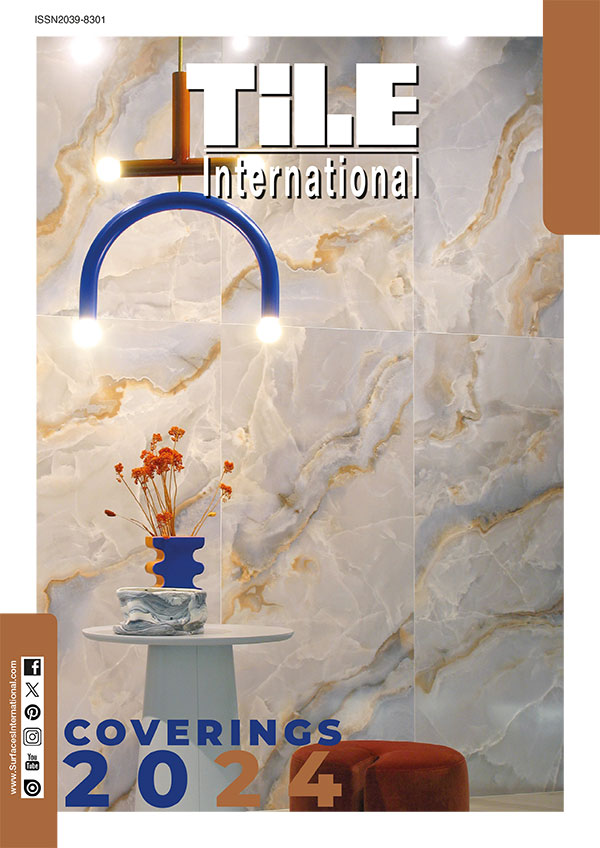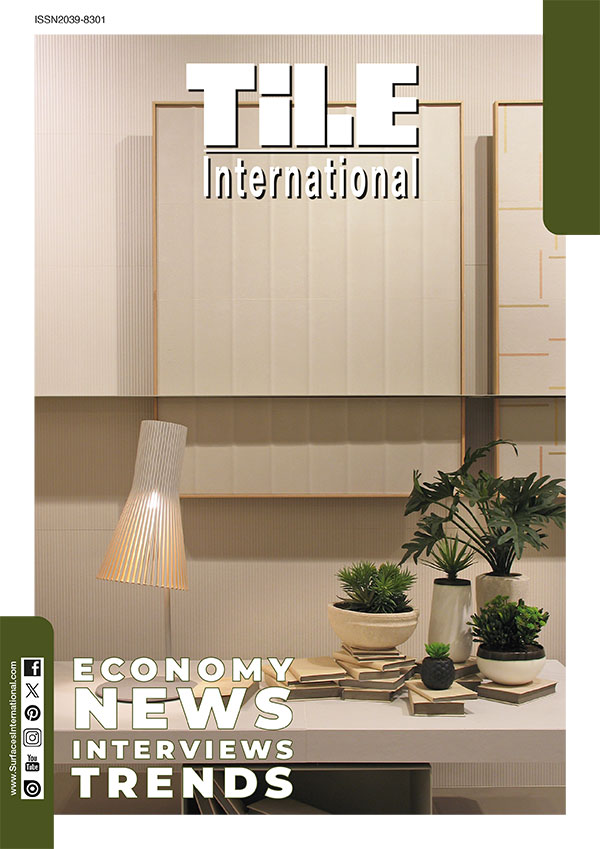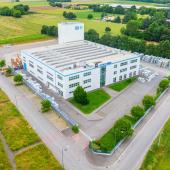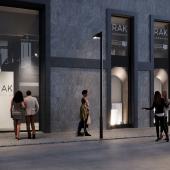Gianni Berengo Gardin. Marazzi, le linee veloci
It will be the first public showing of a selection of photographs made in 1977 by Gianni Berengo Gardin, who was invited by the company to portray its new “high speed” lines. The works reveal an approach to industrial photography unique and groundbreaking for the period: ‘works in colour, where decorations and shapes succeed each other in a whirl, at the rapid pace of their manufacture’.
From 12 September to 3 November 2024, for the 24th edition of festivalfilosofia, in the spaces of the Sala della Musica, Sala degli Incanti and Sala dei Sogni in the Palazzo Ducale, Sassuolo – Gallerie Estensi (Modena), Marazzi Group presents the exhibition entitled Gianni Berengo Gardin. Marazzi, le linee veloci, curated by Alessandra Mauro. The exhibition, organised in collaboration with Gallerie Estensi, Contrasto, Fondazione Forma per la Fotografia and Archivio Gianni Berengo Gardin, celebrates the 50th anniversary of the patenting of the rapid single-firing technique by showcasing a remarkable collection of photographs taken by Gianni Berengo Gardin for the company, not only very different from traditional documentary photography but also almost unique in the great photographer’s history.
In 1974, Marazzi, a leading ceramic manufacturing company, invented the rapid single-firing process, a revolutionary technological patent that changed the tile production process for ever. In order to document this technological leap, which was fundamental not only for the company but for the entire industry, three years later photographer Gianni Berengo Gardin was invited to document these new production lines.
The photographer found himself immersed in a clean, efficient environment with an international feel, where he was fascinated above all by the production speed and the conveyor belt where colours, shapes and patterns seemed to mingle in a vortex: the subject of the project therefore almost immediately became for him the colourful rhythm of production, very different from other industrial contexts in which he had worked.
“I immediately realised that the professional challenge was to capture the rapid flow of colours and the dynamic trail of shapes,” Gianni Berengo Gardin underlined. “So, although I have never photographed in colour much, here it was essential. I also started to work in a new way for me. Here I kept changing distance, getting very close to my subjects to capture their details, the fragments of what I was seeing, and the photographs I produced were very different from my other work: dreamlike, colourful and almost abstract. I am grateful to Marazzi for leaving me free to create abstract photographs like these, which to some extent also pointed the way to a conceptual approach unusual in industrial photography at the time, which generally demanded a more objective, documentary portrayal of products. It was a feast for the eyes, and also a very original work in my terms.”
Gianni Berengo Gardin. Marazzi, le linee veloci is the first public showing of a selection of 42 works from this unique series, highlighting not just the use of colour, so rare in the photographer’s output, but also another unexpected feature. In the words of the exhibition’s curator Alessandra Mauro, in this series of photographs Berengo Gardin “no longer stands back at the distance appropriate for a social photographer, his practice when portraying people, and instead gets up close to the gearing and creates a series of macro visions to construct an almost abstract account, made up of isolated elements, dynamic forms, strips of colour that rotate and vanish, and skilled hands moving over the production line belts. (...) With this body of images created for Marazzi, he shows his ability not only to work, as always, with precise care and subtle poetry, but also to freeze the colourful, rapid tempo of the changing world of work in countless fragments of a second.”
The images Berengo Gardin creates therefore become pieces of a large mosaic, a photographic fresco that is formed within the workspace: a space that in its turn morphs from concrete to abstract, containing, in a ceaseless flow, a chasing carousel, a dance of colours and shapes.
“The relationship between the production of Marazzi and the artistic expressions of the visual arts, architecture, fashion and design, is a history that has repeatedly intertwined and encountered leading photographers, such as Luigi Ghirri, Charles Traub and Cuchi White, and designers, such as Gio Ponti, Nino Caruso and Paco Rabanne, always allowing them the freedom to experiment and recount Marazzi from their perspective,” Mauro Vandini, Marazzi Group CEO, explains. “In these photographs by Gianni Berengo Gardin, it is exciting to rediscover the factory as it was back then, as well as the flair for experimentation that Marazzi has continued to foster over time, combining research into new products and processes with the promotion of different, personal, signature interpretations of ceramics and work, which for us today represent a priceless legacy, built up over 90 years of history, and an inexhaustible source of inspiration.”
“The Gallerie Estensi museums have always built and encouraged public-private partnerships, as also recommended by ministerial directives,” states Alessandra Necci, Director of Gallerie Estensi. “Our joint projects with world-leading corporations from the Modena and Sassuolo area, especially in the ceramics industry to which the Marazzi Group belongs, have been extremely satisfactory. So we’re delighted that the partnership between Gallerie Estensi and Marazzi is continuing, with excellent results, and look forward to further developments in the future.”
Gianni Berengo Gardin. Marazzi, le linee veloci is also the title of the book published by Marazzi Group and Contrasto, with texts by Alessandra Mauro and Gianni Berengo Gardin, containing a selection of 42 works from the series of photographs produced for the company in 1977.

